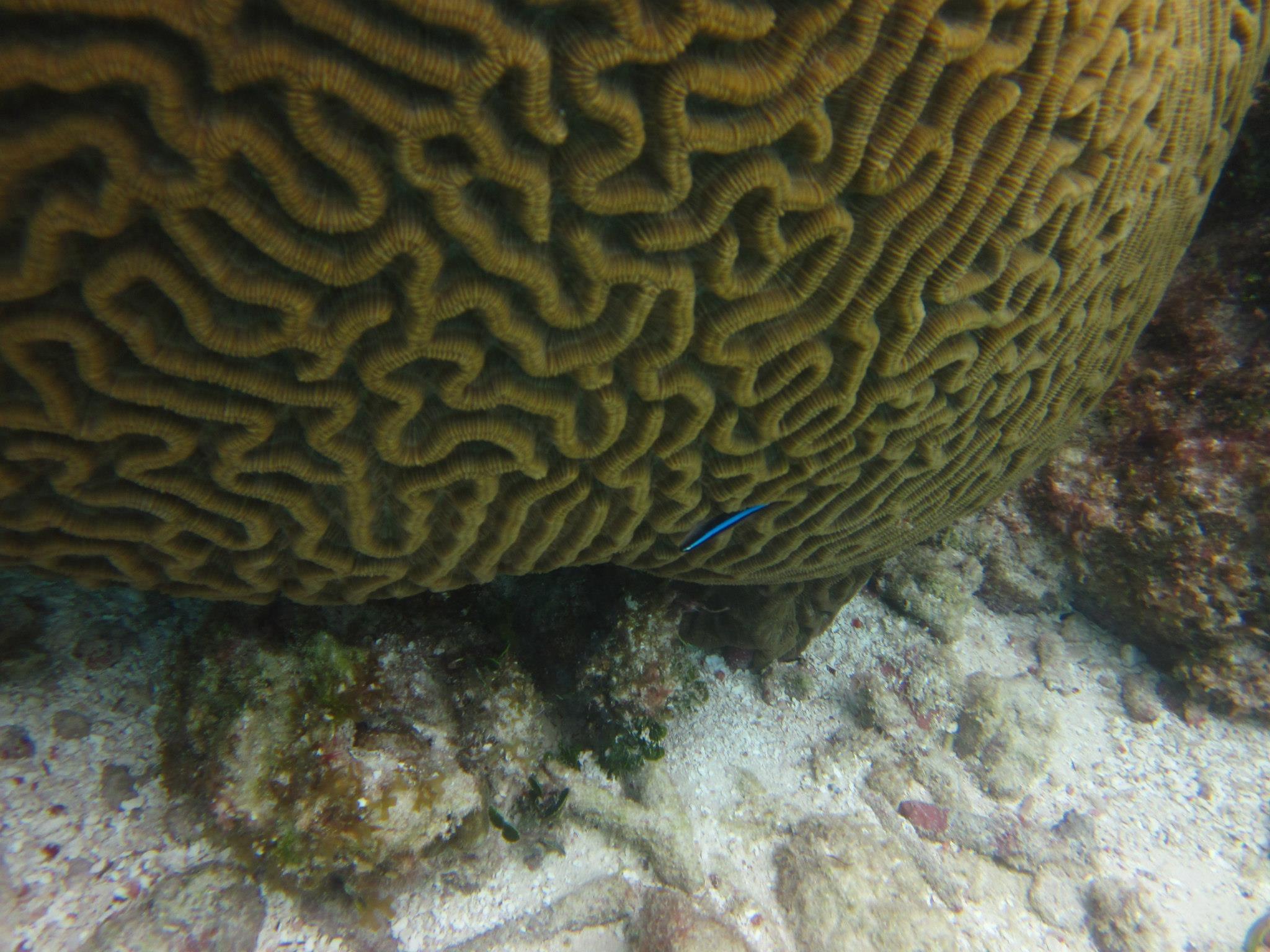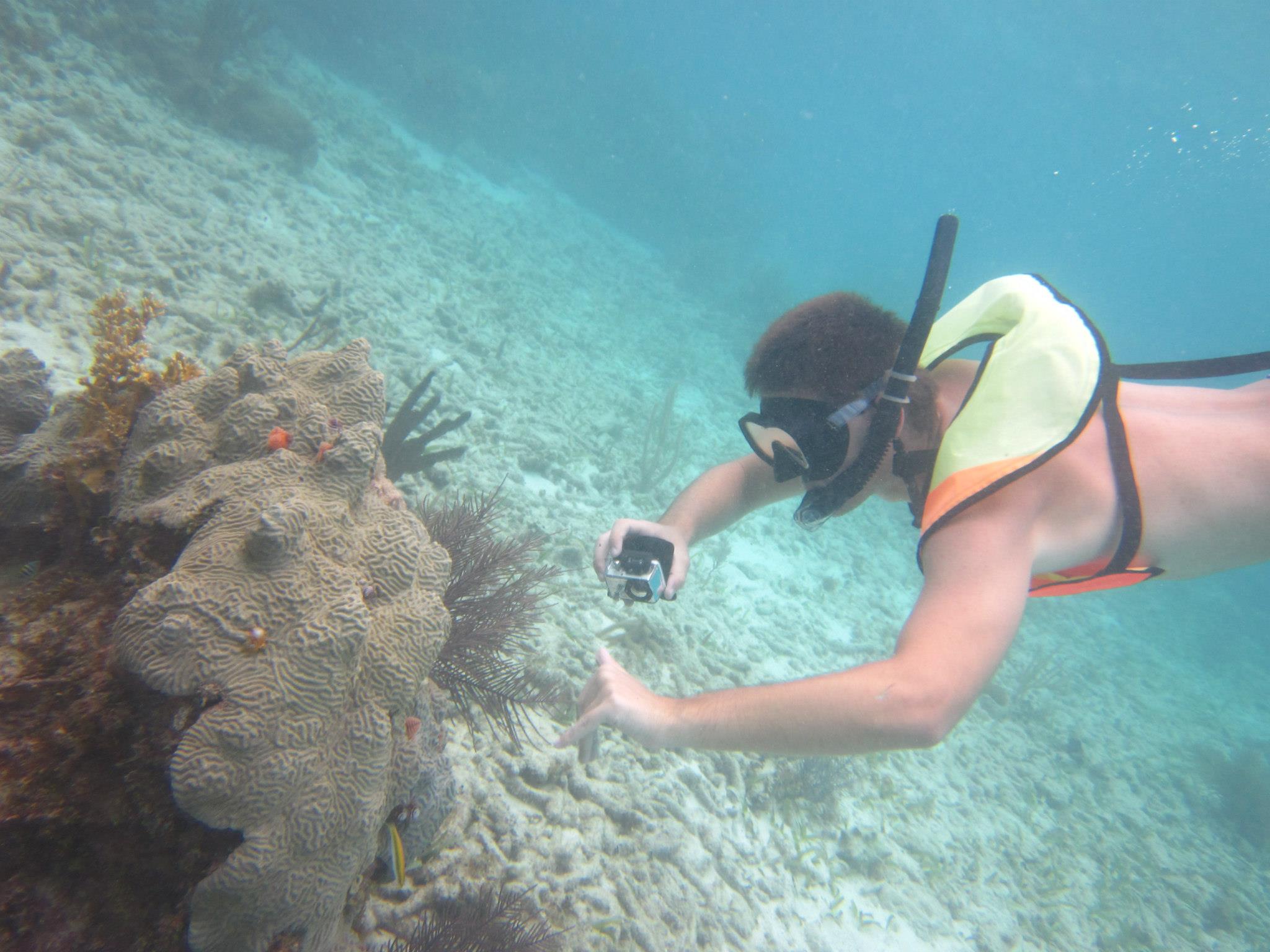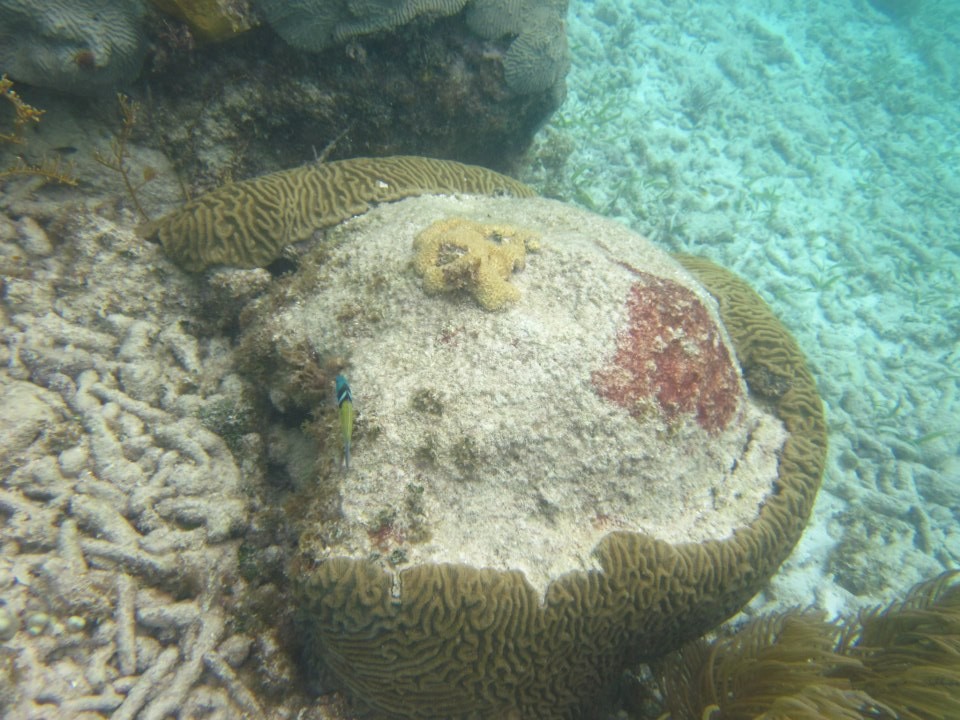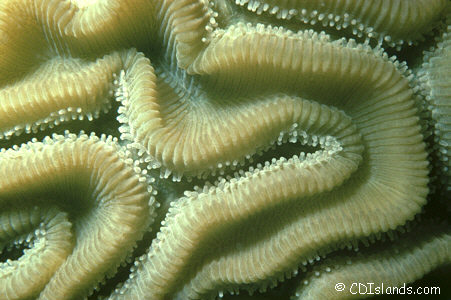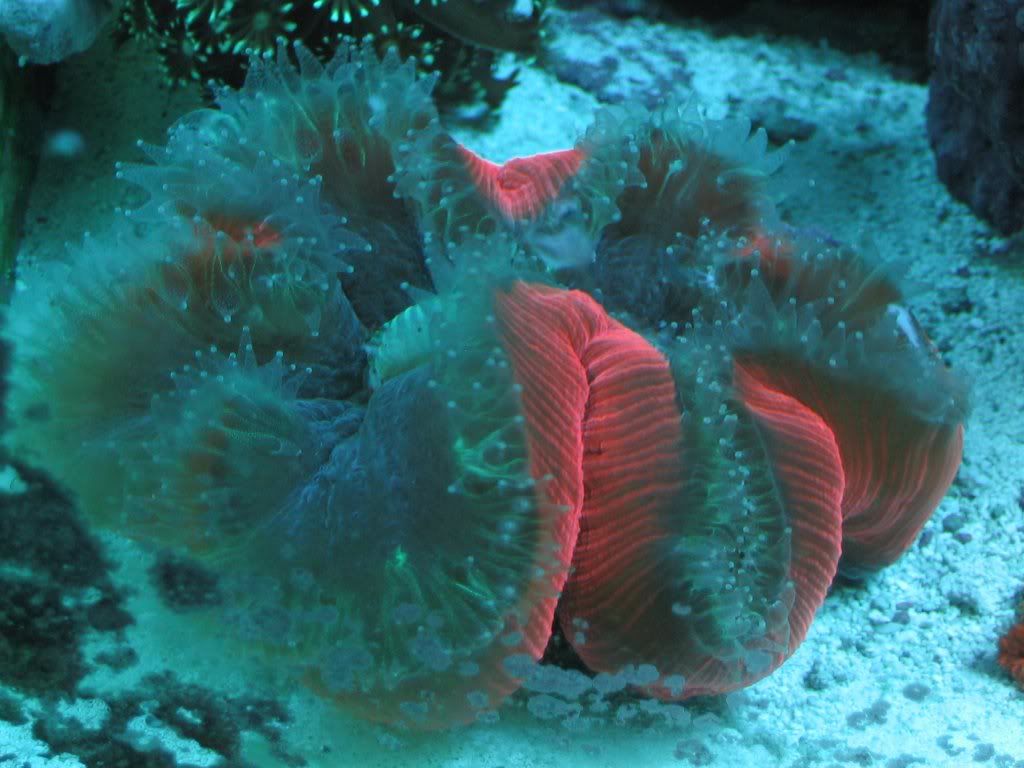Nutrition
A majority of nutrition for brain coral comes froms the symbiotic relationship that they have with their zooxanthellae. These zooxanthellae use the sun to create food for the brain coral, and live right underneath the brain coral's epidermis. Other food that the brain coral eats are plankton and tiny animals that it's polyps catch. The polyps that brain coral contain have tentacles that contain nematocysts (or stinging barbs) to help them capture food. Once the tentacle grabs a hold of the food substance, fine hairs and mucus, called mesentary filaments, carry it into the animals mouth. Brain coral receive 90% of their energy from these zooxanthellae, therefore they are very dependent on this relationship.
Since the brain coral's polyps are nocturnal, they only come out to feed at night. Unfortunately I did not get to witness the feeding of any brain coral in Key Largo, FL., because I was only snorkeling during the day. But I did receive some neat pictures of brain coral, when their tentacles are extended and looking for small plankton.
The color of brain coral comes from what pigment the zooxanthellae inside them carry. When the zooxanthellae photosynthesize to give them energy and nutrition, those pigments create the color that you can observe in different brain corals.
photos from flickr by: jillhudgins, jayhem, DaseinDesign, mjar81
